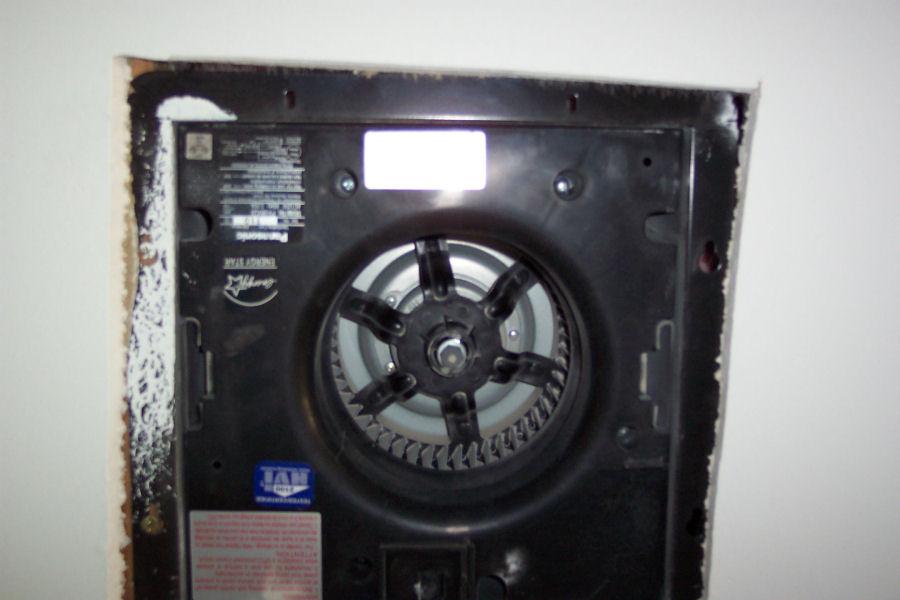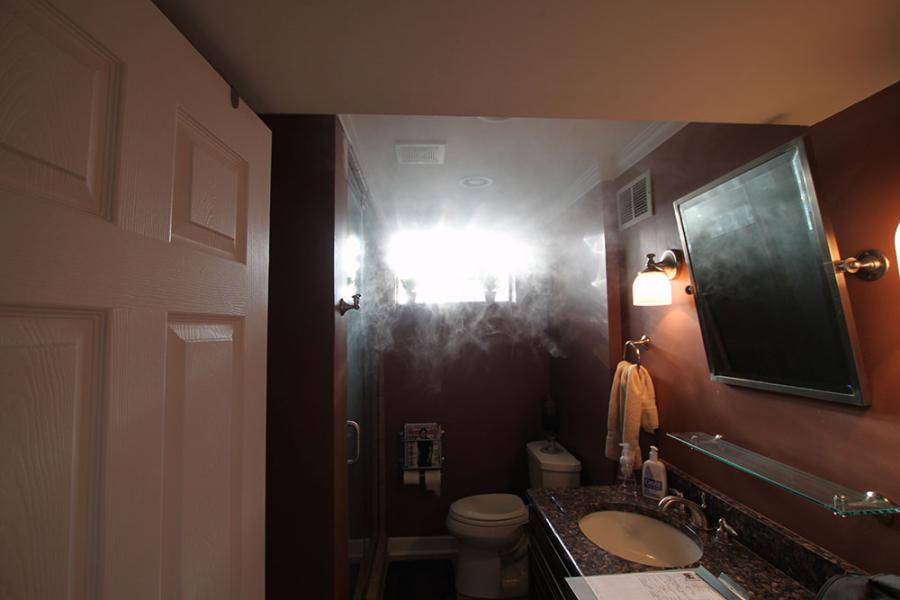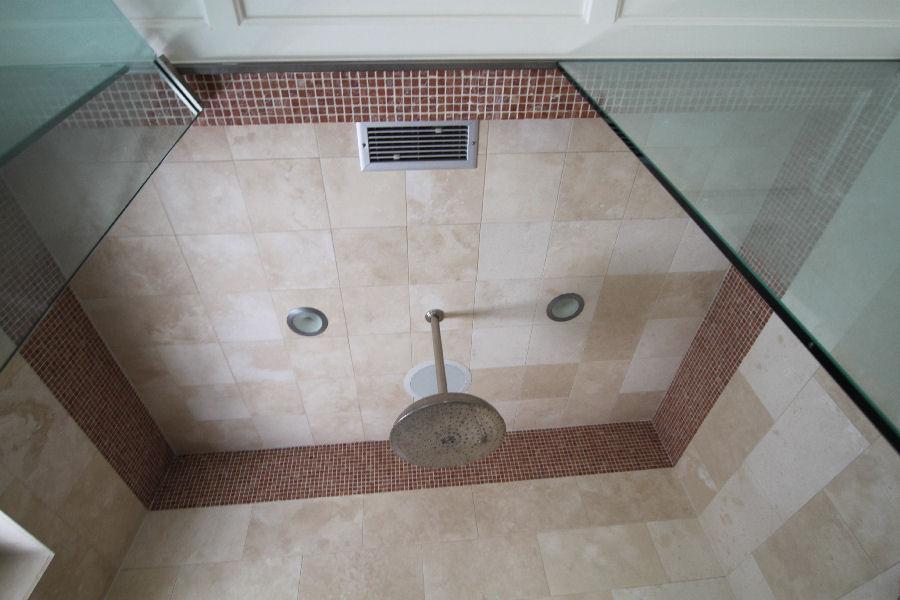Ventilation
Is ventilation required?
No, but it is recommended.
Ventilation for a typical steam shower environment is not much different than that of the average shower. In fact, a typical 5-10 minute shower will release far more humidity into the bathing area or adjacent rooms. That's right, despite what you have been told, the average shower releases more humidity into a home than a steam bathing session. Why? A shower is not enclosed. The air gap between a door/curtain and the ceiling allows water vapor (humidity) to escape the environment and collect on the ceiling and walls. A point-of-use traditional bath fan is generally installed in close proximity to the shower to evacuate the resultant humidity. Try as you may, no residential ceiling fan can keep up with the demands imposed by a hot shower.
Well, what about a steam shower? A steam shower environment is completely enclosed. Encapsulated by approved waterproof materials and a vapor-proof door, the water vapor released during a typical steam bathing session and corresponding shower results in little humidity effect on a home. During an average steam bath, approximately 3-5 gallons of water will be converted to steam, which will react with the environment wall materials, condense back into water and run down the drain. A warm shower following the steam bath aids in reducing the environment's temperature further condensing fine (airborne) vapor particles and cooling wall materials. When exiting the steam shower, all that remains is trace humidity and accumulated surface moisture.
Ventilation is recommended for a steam shower for two reasons, one, because we all bathe differently, and two, the ability to regulate humidity in the home is important. Some enter the steam shower at the first sight of steam and enjoy the gradual environment warm-up; others pre-heat the steam room and prefer the immediacy of high heat upon entry. When entering the steam room at start-up, virtually no moisture is evident. The latter, when the environment is hot, will most certainly release humidity into the surrounding bathing area. Additionally, should your bath be interrupted by a need outside the steam shower, exit and re-entry will also release humidity. As for humidity control, there exists significant data relating to the importance of household ventilation and the removal of latent moisture. Unless one is aware of the moisture effects to their home while bathing, SteamSaunaBath recommends the installation of a variable speed, duration controlled, vapor-proof, remote mounted inline fan to put the user in ultimate control.
All fans are not created equal. A mechanical vent fan or ceiling-mounted bath fan is the most common type of ventilation system utilized to control odors and humidity in bathing areas today. Due to their design, ceiling-mounted mechanical vent fans require a very large ceiling cut-out and must utilize an obtrusively large grille to conceal the motor assembly and intake. Consequently, mechanical vent fans operate loudly and affect environment design appeal. Additionally, due to the use of a motor shaft, squirrel cage and the inherent 90 degree exhaust design, they are quite inefficient. Incapable of operating successfully with long duct runs and with a variable speed control, these fans are not our recommendation for an effective, trouble-free steam shower ventilation system. Note: Steam Sauna Bath strongly discourages the installation of a mechanical vent fan within the steam shower enclosure. In addition to safety related concerns, these fans will not sustain within a high humidity environment and may prevent the steam room from heating as intended. Please call us toll-free at 1-800-707-2862 to review your ventilation needs. We love to help create amazing bathing experiences. For the demands of both humidity and odor control without sacrificing bathroom design, nothing but an inline premium bath fan will do. The fan is the heart of any ventilation system and a fan powered by a 100% speed controllable, external rotor motorized impeller and constructed of a UV-protected thermoplastic resin that exceeds UL approval for wet locations is always preferred. The steam bathing fanatics at SteamSaunaBath have put such a system to the test. Installed inside a test-module routinely subjected to 125 degrees Fahrenheit at 100% humidity (mean steam) and 220° degrees Fahrenheit (a sultry sauna), this fan and grille system continues to impress us. Check out our full-line of ultra-quiet premium bath fans, and bath fans with light combinations, that include an industry-leading 7-year warranty to protect your dream bath.
Clearly a home spa is no place for the roar of a noisy bath fan. Unlike a standard exhaust fan, an inline fan mounts in a location away from the living area, such as an attic, and you will hear no motor. Small and unobtrusive, a 7" diameter ceiling grille, with or without a light, installed outside the steam shower is all that is needed for any size environment. Should additional ventilation or ventilation/light locations over a whirlpool tub and/or toilet or even inside the steam shower be desired, simply duct them to the remote inline fan to quickly and efficiently whisk away moisture, steam and odors.
Why multiple ventilation locations? As the trend to larger spa-like bathrooms continues to gain in popularity, the need for ventilation becomes more important. Gone are the days of a single bath fan in the center of the room. The key to ventilation in oversized baths filled with luxurious amenities is true spot ventilation at the source. Quick removal of moisture and odors at the source will keep an environment free of mold and the effects of extreme moisture. Our inline premium bath fans are engineered so that one remote mounted fan motor can effectively ventilate several areas of the bath. Ceiling grilles, or ceiling grilles with lights, can be easily positioned over showers, whirlpool tubs, steam showers and toilets. Should your project involve two bathrooms, see our products that serve two bath applications utilizing one fan.





